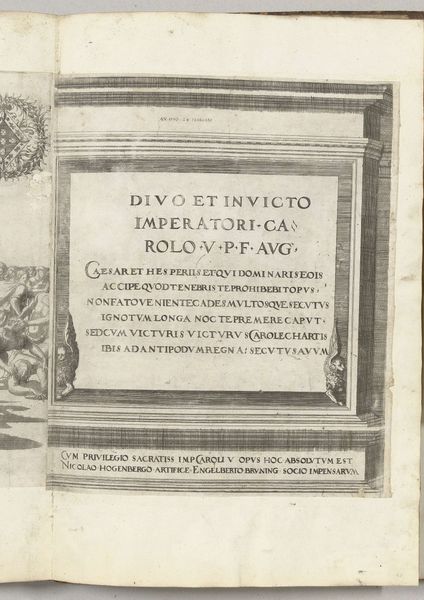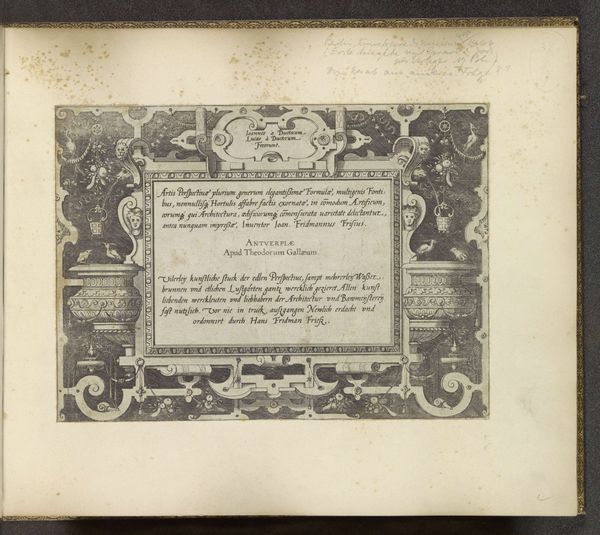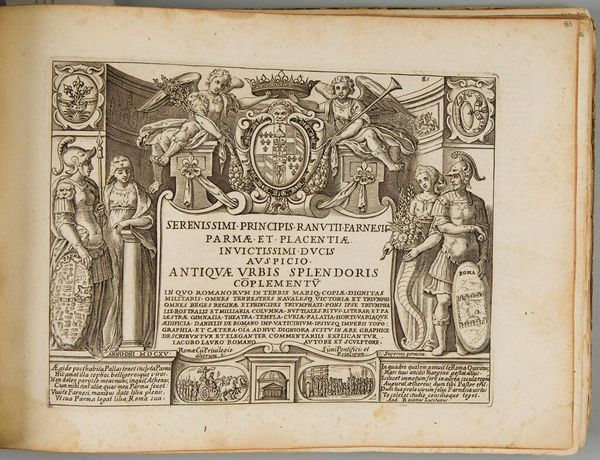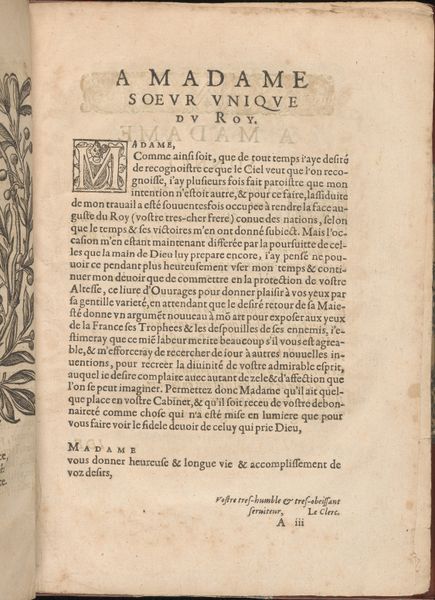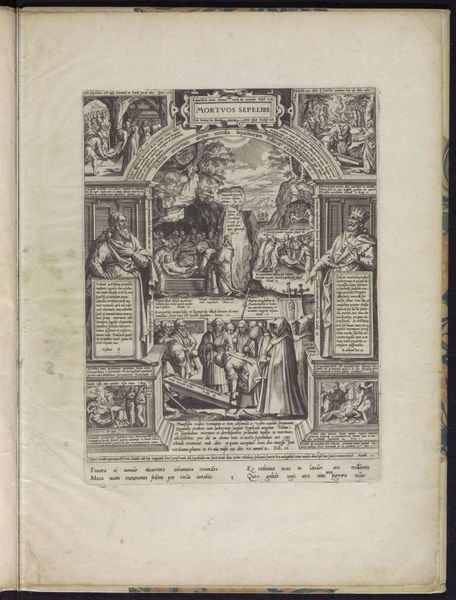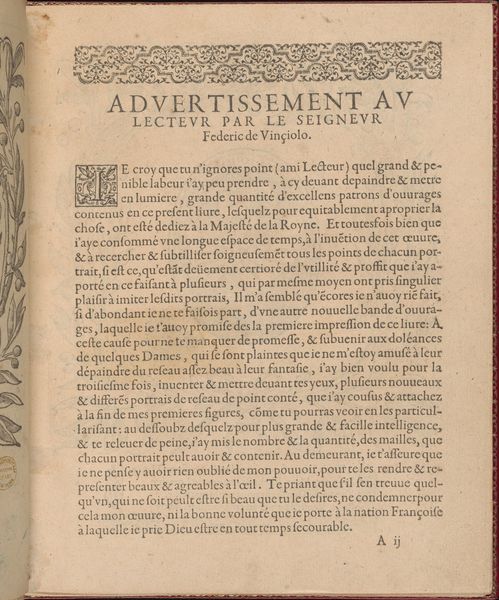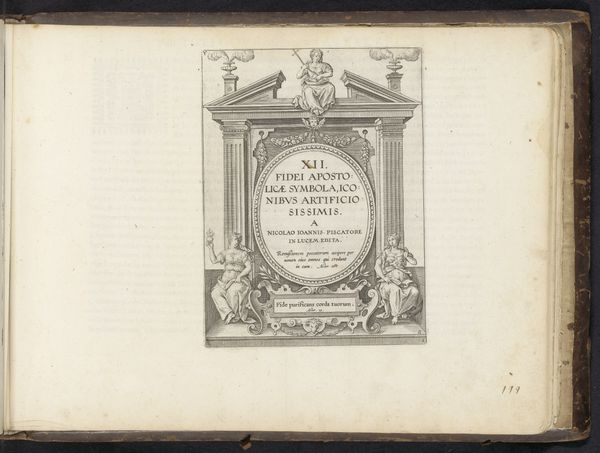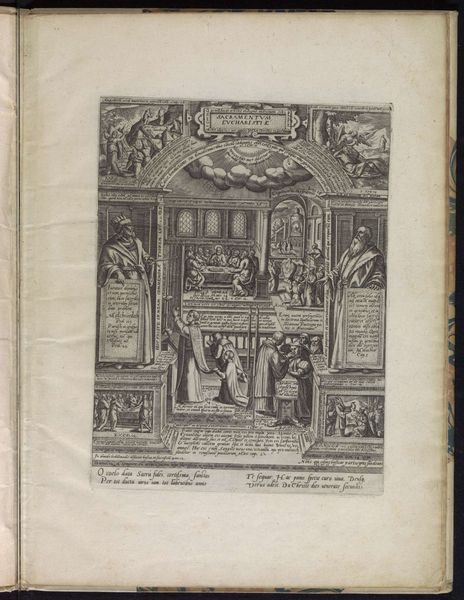
drawing, print, paper, typography, woodcut, engraving
#
drawing
#
narrative-art
# print
#
woodcut effect
#
figuration
#
paper
#
11_renaissance
#
typography
#
woodcut
#
italian-renaissance
#
engraving
Copyright: Public Domain
Curator: Ah, here we have a fascinating piece, a page from Antonio Francesco Doni's "I Marmi," printed between 1552 and 1553. What's grabbing you about it at first glance? Editor: The graphic quality! I’m immediately drawn to the almost harsh, contrasted look of the woodcut. There’s a story hinted at within that small rectangle – figures interacting, someone on horseback... it’s intriguing given how rudimentary the printmaking seems. How does this printed medium factor into the ideas that Doni might be pursuing here? Curator: Well, the use of woodcut and typography reflects Doni's ambition to make philosophical discourse accessible to a broader audience during the Renaissance. The "Marmi" isn’t just a book, it's a simulated dialogue set amongst marble statues, where characters debate artistic and intellectual ideas. It's pure Renaissance! Editor: Ah, a debate made visual! So, it’s not just about aesthetic refinement, but also a challenge to traditional means of knowledge production. Think about the labour involved in producing these prints – it democratizes the conversation by distributing multiple copies, but what was the original wood like? How long would one plate run last before it began to disintegrate? Was that also symbolic? Curator: A valid point. Considering Doni's satirical edge, I wouldn't rule out such layers. The woodcut's inherent roughness juxtaposes the refined marble settings he describes, playfully questioning artistic ideals. Doni really stirs the pot and questions art’s meaning. Editor: So, this wasn’t just a means of mechanically reproducing artwork; it was intrinsically linked to making meaning through the act of print and its proliferation. Plus, there's a social context we cannot forget. It wasn’t simply about an artist; rather, artisans facilitated that expression through specialized labour that helped to manifest these ideas. And the use of paper meant deforestation on a grand scale... which leads me back to materiality... Curator: That’s true; this particular leaf does serve to encapsulate so many facets of that time—from artistry and philosophy to a kind of budding awareness of ecological impacts. I find it rather exciting in that sense; to witness Doni playfully exploring our role in creating the worlds around us. Editor: It highlights art's accessibility through reproduction techniques—emphasizing accessibility while quietly reflecting how social class intersects directly with these means of circulation, the paper’s materiality, the print maker, the tree that provided its mass and the horse that carried this very message... all in dialogue. Curator: Indeed. This has given me new thoughts on Doni’s social perspective. I see it anew! Editor: Absolutely! Let’s remember the hand and material labour that bring these concepts together.
Comments
No comments
Be the first to comment and join the conversation on the ultimate creative platform.
